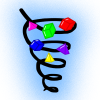Class that contains all information of two colliding shapes.
More...
#include <CollideShape.h>
|
| Vec3 | mContactPointOn1 |
| | Contact point on the surface of shape 1 (in world space or relative to base offset)
|
| |
| Vec3 | mContactPointOn2 |
| | Contact point on the surface of shape 2 (in world space or relative to base offset). If the penetration depth is 0, this will be the same as mContactPointOn1.
|
| |
| Vec3 | mPenetrationAxis |
| | Direction to move shape 2 out of collision along the shortest path (magnitude is meaningless, in world space). You can use -mPenetrationAxis.Normalized() as contact normal.
|
| |
| float | mPenetrationDepth |
| | Penetration depth (move shape 2 by this distance to resolve the collision). If CollideShapeSettings::mMaxSeparationDistance > 0 this number can be negative to indicate that the objects are separated by -mPenetrationDepth. The contact points are the closest points in that case.
|
| |
| SubShapeID | mSubShapeID1 |
| | Sub shape ID that identifies the face on shape 1.
|
| |
| SubShapeID | mSubShapeID2 |
| | Sub shape ID that identifies the face on shape 2.
|
| |
| BodyID | mBodyID2 |
| | BodyID to which shape 2 belongs to.
|
| |
| Face | mShape1Face |
| | Colliding face on shape 1 (optional result, in world space or relative to base offset)
|
| |
| Face | mShape2Face |
| | Colliding face on shape 2 (optional result, in world space or relative to base offset)
|
| |
Class that contains all information of two colliding shapes.
◆ Face
◆ CollideShapeResult() [1/2]
◆ CollideShapeResult() [2/2]
| CollideShapeResult::CollideShapeResult |
( |
Vec3Arg | inContactPointOn1, |
|
|
Vec3Arg | inContactPointOn2, |
|
|
Vec3Arg | inPenetrationAxis, |
|
|
float | inPenetrationDepth, |
|
|
const SubShapeID & | inSubShapeID1, |
|
|
const SubShapeID & | inSubShapeID2, |
|
|
const BodyID & | inBodyID2 ) |
|
inline |
◆ GetEarlyOutFraction()
| float CollideShapeResult::GetEarlyOutFraction |
( |
| ) |
const |
|
inline |
Function required by the CollisionCollector. A smaller fraction is considered to be a 'better hit'. We use -penetration depth to get the hit with the biggest penetration depth.
◆ Reversed()
Reverses the hit result, swapping contact point 1 with contact point 2 etc.
◆ mBodyID2
| BodyID CollideShapeResult::mBodyID2 |
BodyID to which shape 2 belongs to.
◆ mContactPointOn1
| Vec3 CollideShapeResult::mContactPointOn1 |
Contact point on the surface of shape 1 (in world space or relative to base offset)
◆ mContactPointOn2
| Vec3 CollideShapeResult::mContactPointOn2 |
Contact point on the surface of shape 2 (in world space or relative to base offset). If the penetration depth is 0, this will be the same as mContactPointOn1.
◆ mPenetrationAxis
| Vec3 CollideShapeResult::mPenetrationAxis |
Direction to move shape 2 out of collision along the shortest path (magnitude is meaningless, in world space). You can use -mPenetrationAxis.Normalized() as contact normal.
◆ mPenetrationDepth
| float CollideShapeResult::mPenetrationDepth |
Penetration depth (move shape 2 by this distance to resolve the collision). If CollideShapeSettings::mMaxSeparationDistance > 0 this number can be negative to indicate that the objects are separated by -mPenetrationDepth. The contact points are the closest points in that case.
◆ mShape1Face
| Face CollideShapeResult::mShape1Face |
Colliding face on shape 1 (optional result, in world space or relative to base offset)
◆ mShape2Face
| Face CollideShapeResult::mShape2Face |
Colliding face on shape 2 (optional result, in world space or relative to base offset)
◆ mSubShapeID1
Sub shape ID that identifies the face on shape 1.
◆ mSubShapeID2
Sub shape ID that identifies the face on shape 2.
The documentation for this class was generated from the following file:


